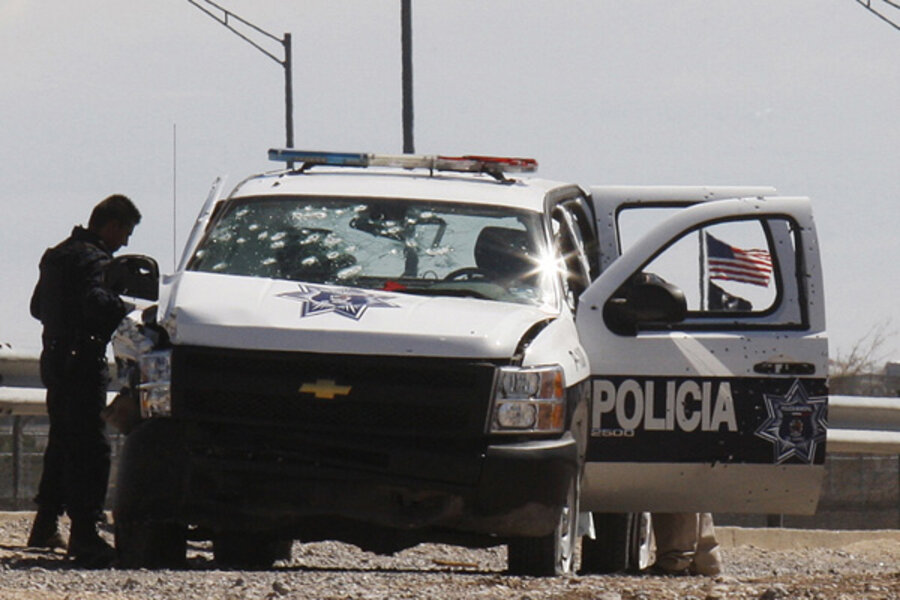Is violence in Mexico affecting foreign investment? No, say recent reports.
Loading...
| Mexico City
Recent reports out of Mexico describe violent border states as lands of economic opportunity, despite the car bombs and dead bodies hanging from pedestrian bridges.
One government report last month showed that seven states where most drug-related murders take place are receiving greater percentages of the country’s Foreign Direct Investment (FDI) than they were before the drug war began in 2006.
The Financial Times reported that the industrial hub turned narco playground of Monterrey raked in $2 billion last year in FDI, compared to $1.4 billion in 2008, before the global recession. And NPR said last week that the murder capital Ciudad Juarez is sending record exports to the United States, thanks mostly to multinationals and not local businesses.
These accomplishments may serve to justify the government’s head-on approach to fighting crime and drug cartels.
Federal authorities said as much upon releasing their report: “The constant flow of foreign direct investment, even in places that have shown the phenomenon of violence from criminal rivalries of the greatest severity, is yet another reason to forge ahead, to deepen and speed up this fight,” said Mexico’s national security spokesman Alejandro Poire.
And if the business-friendly administration of President Felipe Calderon is dismantling trafficking rings and at the same time boosting investment, there is little reason to capitulate to activists who call for a change in strategy as the death toll rises. Over 35,000 people have died since Mr. Calderon sent troops to fight cartels in late 2006.
But not all economists are convinced that business is booming in places like Monterrey, Nuevo Leon, and Ciudad Juarez, Chihuahua. They say the investment landscape is much more complicated than the media and government reports suggest.
In fact, the largest new investments are moving into central Mexico and away from border areas, says JP Morgan’s chief Mexico economist Gabriel Casillas. He lists Mazda, Bombardier, Volkswagen, and Eurocopter plants among new projects setting up shop in places like Guanajuato, Queretaro, and Puebla.
“We are seeing a geographic change in new investment plans from hotspots of violence to safer cities,” Mr. Casillas says.
Casillas added that close to half of Nuevo Leon’s robust FDI from 2010 came from an exchange of stocks due to Heineken’s acquisition of Coca-Cola Femsa in Monterrey. It may be considered FDI, but it is not an investment that generates new jobs, he explains.
Other factors to watch are how much of the investment is new and how much is a reinvestment of profits, which does not indicate new money flowing in from outside the country, says Rodolfo Navarrete, an economist at Vector Casa de Bolsa brokerage house in Mexico City.
In Chihuahua, FDI bounced back to $1.4 billion last year from $1 billion during the recession. But none of that FDI money flowed to new investments in 2010’s fourth quarter or first quarter of this year, according to the latest Economy Ministry data.
“It’s difficult to talk about a boom per se,” says Gabriel Lozano, an economist at Banco Santander in Mexico City.
Mr. Lozano says a few more quarters are needed to see if investment figures in northern border states will expand beyond pre-crisis levels or remain stagnant like much of the country.
The silver lining, Lozano says, is that Mexico is becoming more attractive as wages and materials rise in price in other outsourcing capitals like China. And there will always be multinationals that are either too big or too profitable to be scared off by drug traffickers.





